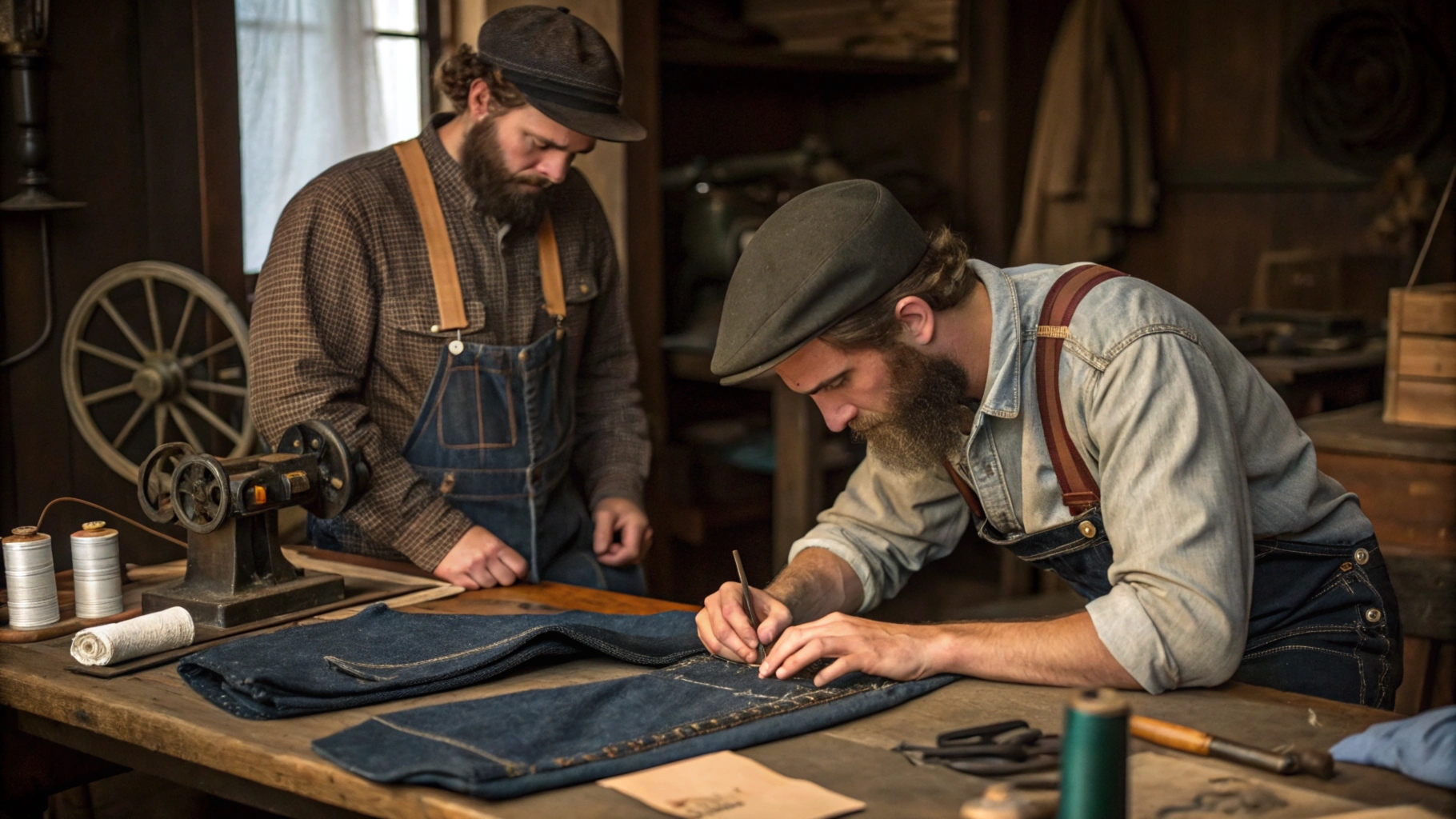Denim is everywhere, but have you ever wondered where it all began? The story behind this iconic fabric might surprise you.
Denim was invented in the late 17th century in Nîmes, France, originally called "serge de Nîmes." Levi Strauss and Jacob Davis later popularized it in the 1870s by creating the first riveted jeans1.
I remember reading about this and feeling amazed at how a simple fabric could have such a rich history.
Why is denim always blue?
The classic blue color of denim is unmistakable.
Denim is traditionally dyed with indigo, a natural dye that imparts a deep blue hue2. Indigo was abundant and affordable, making it the preferred dye for denim fabric.
The Significance of Indigo Dye
- Historical Availability: Indigo plants were widely cultivated, making the dye accessible.
- Durability: Indigo dye bonds well with cotton, ensuring long-lasting color.
| Aspect | Details |
|---|---|
| Dye Used | Natural indigo |
| Color Fastness | High resistance to fading |
| Cultural Impact | Blue denim became a fashion staple |
What does wearing denim symbolize?
Denim isn’t just fabric; it’s a statement.
Wearing denim symbolizes durability, rebellion, and timeless style3. It’s associated with workwear roots and has become a universal symbol of casual fashion.
Denim Through the Ages
- 19th Century: Worn by miners and laborers for its toughness.
- 1950s: Adopted by youth as a symbol of rebellion.
- Modern Day: A fashion essential across all demographics.
Denim has transcended social and cultural boundaries, uniting people through a common wardrobe staple.
Are black jeans denim?
You might own a pair of black jeans and wonder about their origin.
Yes, black jeans are made from denim fabric dyed with black or sulfur dyes4. They share the same weave and characteristics as traditional blue denim jeans.
Variations in Denim Color
- Blue Denim: Dyed with indigo, the classic choice.
- Black Denim: Uses different dyes for a darker hue.
- Colored Denim: Available in various colors for diverse styles.
Black denim offers versatility, fitting both casual and formal settings.
Is denim 100% cotton?
Fabric composition affects comfort and durability.
Traditional denim is made from 100% cotton in a twill weave. However, modern denim often includes blends with elastane or polyester for added stretch and resilience5.
Types of Denim Fabric
| Denim Type | Composition |
|---|---|
| Pure Denim | 100% cotton |
| Stretch Denim | Cotton with elastane (spandex) |
| Poly Denim | Cotton-polyester blend |
Knowing the fabric content helps me choose jeans that fit well and last longer.
Conclusion
Understanding denim’s origins enriches our appreciation for this timeless fabric that continues to influence fashion worldwide.
-
Denim originated in Nîmes, France, and was later popularized by Levi Strauss and Jacob Davis with riveted jeans. ↩
-
Indigo dye has been central to denim’s iconic blue color, contributing to its cultural impact. ↩
-
Denim’s symbolism evolved from workwear to a statement of rebellion and style. ↩
-
Black denim shares the same fabric characteristics as blue denim but uses different dyes. ↩
-
Modern denim includes blends for added comfort and versatility in fashion. ↩






